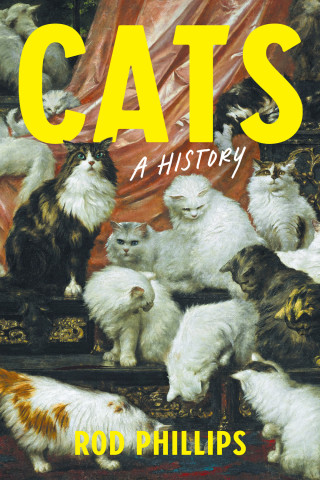
Reviews
[A] magisterial account... Anderson's compelling study captures the texture of twentieth-century medical fieldwork and provides insight into the social dynamics and ethical realities of globalized science and medicine. The Collector of Lost Souls persuades us that these things really happened and shows us why they matter.
Very much about possession, The Collectors of Lost Souls should be possessed by everyone and its powers to possess let loose. This is the witchcraft of history at its best.
In his riveting description of the exchanges and misunderstandings that constituted the search for kuru, Anderson has created that rare thing: an academic page-turner.
For a lay reader it is an extraordinarily rich story about how, in the twentieth century, the idea of otherness changed so profoundly. Too fast, in some instances, for researchers to catch up and understand that it was no longer acceptable to see the world—and its people—as an open adventure park for scientific exploration.
This is not a textbook; the scientific, sociological or administrative accounts are readily available elsewhere. It is a saga of proportions seen before in tales such as Jonah and the Whale, or the magical mystery of Joseph Conrad's Heart of Darkness. Yet the kuru story is true and this book about it demands to be read from the beginning to the end.
Distinguished by captivating storytelling and a historiographically rigorous account of the events. Lost Souls is not only enjoyable for any interested layman, but it also provides a thoroughly researched account of a remarkable scientific adventure that spans four decades.
Anderson has masterfully captured the complex, exotic and often extraordinary nature of this inquiry and the idiosyncrasies of a key scientist... This is a significant book.
Warwick Anderson in The Collectors of Lost Souls offers his readers a profound and historically-nuanced account of kuru as a force in shaping modernity.
Anderson's book is a valuable and sometimes provocative contribution to the study of science and medicine in colonial and post-colonial contexts. He shows how the relationships between scientific researchers and their 'tribal' research subjects have changed in the past 50 years. Modern bioethics has constructed welcome limits to research activities in this regard, but these limits are often defined purely from the perspective of the western world. Anderson gives an eloquent voice to other concepts and shows that truly global bioethics still face many challenges.
An admirably readable book that weaves together bio-prospecting, cannibalism, colonialism, and globalization and remarkably manages to put the complexity of human relationships at the very center of the story. Especially valuable to the field for what it demonstrates about the possibility of writing a compelling narrative about postcolonial and postmodern complexity in a way that is both straightforward and engaging. It should be read as a venerable model for how to bring the insights of science studies to a broader audience.
This book is great fun to read, is worth exploring for its footnotes as well, and ends with an enigmatic literary twist that is aesthetically pleasing but also worth an anthropological recontextualizing.
A strikingly original and exciting work, imaginatively conceived, meticulously researched, and powerfully argued. It deserves to be widely read.
An outstanding book that is must reading for anyone interested in the history of medical science. It will help place in perspective the broad influence, the triumph, and the ultimate tragedy of the life of Nobel Laureate D. Carleton Gajdusek.
Heavily inflected by anthropological method and narrative style, Anderson's account of Gajdusek's career is captivating. This master historian of medicine has taken his expertise into the field with great success.
Essential reading for those concerned with science studies and biomedical ethics.
Who should read Collectors? Many. Transactions and translations; issues of obligation and engagement; of power, respect and autonomy arise regularly and in many contexts, not only in development settings. Undergraduate students will be struck by the dependence of the high-tech of contemporary science on fragile personal relationships. Apprentice historians can learn much from Anderson's narration of a story where the voices are many and the issues grave. Especially in relation to Gajdusek, I find his stance exemplary. He is chronicler, not biographer; he avoids the temptation to interpret, speak for, reduce to, explain away; he accords Gajdusek both the majesty of his achievement and the dignity of his tragedy.
An excellent, even superb, volume, which combines great scholarly vigor with a well-told story on a fascinating and important topic. A highly 'teachable' book, it will also be of interest to anyone studying the Pacific who is interested in learning more about kuru and/or the history of medicine.
Far from offering a rational, detached, absolute way of approaching the world of objects and people, in Anderson's treatment science—and particularly scientific exchange—is as shot through with venality, avarice, outsized appetites and complicated entanglements as other human interactions. In his meticulous and multi-layered study, Anderson does an excellent job of negotiating the thin line between titillating details and scholarly analysis.
How kuru came to the attention of Western scientists is the story that Warwick Anderson's stunning The Collectors of Lost Souls. Anderson's book, which deliberately forces readers to reimagine the meaning of scientific discovery, colonialism, and sorcery, situates its global narrative around sources found in archives in Papua New Guinea, Australia, and the United States and further develops it through oral histories delivered by scientists, anthropologists, and the Fore people.
An exemplary account of the discovery of the causes of a disease... a work of great theoretical insight.
This is a big story with sex, cannibalism, revolutionary scientific discoveries of unknown infectious proteins and some of the world's most headline-catching diseases — kuru, scrapie, CJD and BSE. The larger-than-life central character of this exotic soap opera, Nobel Prize winner Carleton Gajdusek, died in December last year [2010].
This marvelous book deliberately forces us to re-imagine the meaning of sojourn, scientific discovery, colonialism, and sorcery, while at the same time providing us with an account of the discovery of kuru, a lethal neurological disease, and the science that ultimately determined its etiology.
This book is a fascinating read of interest to all historians and (hopefully) scientists, and draws on Anderson's wide ranging interests in the practice of medicine in a colonial context.
Book Details
Preface to the Updated Edition
Introduction. The Disease Europeans Catch from Kuru
Chapter 1. Stranger Relations
Chapter 2. Portrait of the Scientist as a Young Man
Chapter 3. A Contemptuous Tenderness
C
Preface to the Updated Edition
Introduction. The Disease Europeans Catch from Kuru
Chapter 1. Stranger Relations
Chapter 2. Portrait of the Scientist as a Young Man
Chapter 3. A Contemptuous Tenderness
Chapter 4. The Scientist and His Magic
Chapter 5. Hearts of Darkness
Chapter 6. Specimen Days
Chapter 7. We Were Their People
Chapter 8. Stumbling along the Tortuous Road
Conclusion. Dénouement Was a Bit Difficult
Afterword
Acknowledgments
List of Abbreviations
Notes
Bibliography
Index






